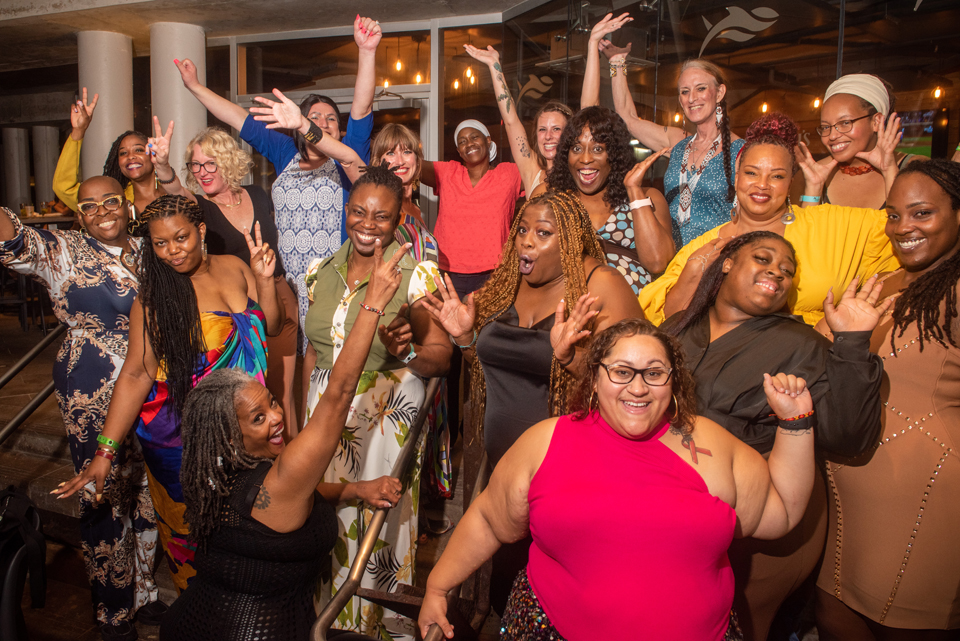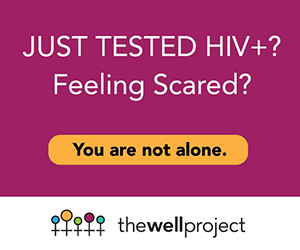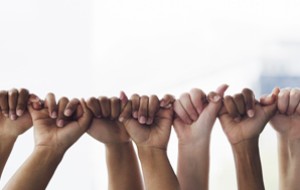By Jenna Conley, Ciarra Covin, Olivia G. Ford, and Masonia Traylor
Table of Contents
- Sexual Health
- Sexual Rights
- Women and Research
- Stigma, Mental Health and Quality of Life
- Gender Identity
- Intersectionality and Systemic Inequities
- Youth Culture and Social Support
- Serving and Caring for Young People
Sexual Health
Sexual health for women living with HIV is a highly important, but often overlooked aspect of women's care and lives; a number of presentations addressed the need to more prominently highlight the subject. The bridging session Sexual Health, Sexual Rights, Sexual Pleasure: The Perfect Triangle highlighted the essential and central role that sexual pleasure must play in discussions, campaigns, policy, and care provision around sexual and reproductive health and rights and HIV. Each presenter shared their perspective and resources responding to the troubling fact that pleasure is so rarely included in work around a condition transmitted through sex, which many individuals engage in primarily for pleasure.
In the poster Beyond Prevention: Recognizing the Concerns About Sexual Wellbeing Among Women Post HIV Diagnosis, more than half of women living with HIV reported concerns related to their sexual well-being. Of those women, nearly all reported distress associated with those concerns. Only one in three women with concerns talked to anyone about them, highlighting the need for health care practitioners to proactively address sexual health among women living with HIV. The poster Discussing Reproductive Plans with Healthcare Providers Among Sexually Active Women Living with HIV described an Ethiopian study finding that safe conception conversations only happened inconsistently among women living with HIV, suggesting the need for increased provider training.
While the poster Persisting Barriers for U=U in Family Planning and Assisted Reproduction of PLHIV found that most providers working with assisted reproduction were supportive of family planning for serodiscordant couples, they recommended assisted reproduction even when there were no fertility needs. These findings highlight the gap between evidence supporting U=U and attitudes among specialists working in family planning and assisted reproduction, again pointing to the need for additional education and training.
Resources on pleasure and sexual health advocacy:
- Training Toolkit – Global Advisory Board for Sexual Health and Wellbeing
- Pleasuremeter (an innovative approach to taking a sexual history) – Global Advisory Board for Sexual Health and Wellbeing
- The Pleasure Project
Sexual Rights
Additional barriers to sexual health for women living with HIV are policies, practices, and systems that limit women's freedom and autonomy. Among the most notorious, widespread, and damaging of these policies is the Mexico City Policy, also known as the "global gag rule," which prevents health services organizations worldwide from providing or even talking about abortion if they receive any amount of U.S. family-planning funding. The Trump administration expanded this rule to include most other forms of U.S. health aid; and eventually made it the law in the U.S. by prohibiting recipients of federal Title X family-planning funds from offering abortion services or education. The symposium session Bound but not Gagged: Resilience in the Era of the Global Gag Rule spelled out numerous harms of this rule for vulnerable and key populations in the HIV response across the globe. For instance, some clinics offering unique HIV services and care to communities living with and vulnerable to HIV, such as sex workers, have been forced to close. In the U.S., the domestic gag rule blocks access to vital health information at a crucial entry point to the health care system for many communities already facing systemic barriers to care, particularly Black and Latinx women and young people.
The reproductive justice framework, formed by a group of Black feminists (including some working primarily in HIV) in 1994, names personal bodily autonomy, having or not having children, and parenting the children we have in safe and sustainable communities as human rights. In the bridging session My Body, My Health, My Choice: Sexual and Reproductive Health Rights and Justice, Rev. Deneen Robinson of The Afiya Center presented the framework as an important tool to center and respond to the full lives of clients, particularly Black women, in the HIV care model – including their sexual health, sexual rights, and social, political, and cultural factors that block access to those rights while also hindering HIV treatment success.
Women and Research
Women have long been underrepresented in HIV research, despite accounting for more than half of all people living with HIV around the world. One simple approach to increase that representation is to design studies that specifically address women's needs, rather than plugging them into research designed for men.
One example of this approach was highlighted in Begin with the End in Mind: Using Human-Centered Design to Improve Outcomes Across the Continuum of Care. In response to the fact that young African women were turned off by the way that their PrEP (pre-exposure prophylaxis) pills rattled in their traditional pill bottles, researchers developed a pill case designed to look like a lip gloss that could hold a seven-day supply of PrEP, which the young women liked and were willing to use. In the symposium session It's a Man's World: Are Women Losing Out When it Comes to Biomedical HIV Prevention? WRI members Adaora Adimora, MD, MPH, and Dazon Dixon Diallo, MPH, DHL (along with other experts) cataloged ways in which women have been left behind in biomedical HIV prevention. They described the circumstances that allowed Descovy, a new PrEP option, to be approved only for cis men and trans women (and not for cis women) and recommendations for how to avoid similar situations in the future (including involving women in all steps of trial development and implementation and holding stakeholders responsible); missed opportunities for PrEP in women (and how to address them); learnings from clinical trials and ART roll-out about unequal benefits for women; and successes and challenges in individual PrEP programs.
Stigma, Mental Health and Quality of Life
Mental health challenges are overrepresented and inadequately addressed among women living with HIV worldwide. HIV stigma fuels the global HIV pandemic. Several sessions looked at key ways that the latter impacts the former, especially for women. An Overlooked Epidemic: Mental Health and HIV, a live session hosted by the International Community of Women Living with HIV (ICW), featured a diverse, dynamic panel of global women leaders living with HIV, most from the global South and/or the African diaspora. Each presented ways that systemic conditions driven by stigma had dire impacts on women's mental health and quality of life, including past and current experiences of violence; experiences of internal displacement; reproductive oppression, including coerced sterilization; and state violence in the form of criminalization. In many instances, HIV and other overlapping forms of stigma (such as around gender identity, adolescent sexuality, or sex work experience) render these conditions more difficult while also making it harder for women to seek help. Key takeaways were the importance of integrating services with mental health care; recognizing the connection between mental health and sexual and reproductive health and rights; normalizing mental health services in adolescent care; and ensuring that all our work employs a trauma-informed approach.
A thread woven throughout these presentations was the need to not only be responsive to the needs of women living with HIV, but also invest in research and programming designed by those most impacted by the resulting work. The bridging session Stigma Kills: Time for Change included a presentation on the Ugandan iteration of the People Living with HIV Stigma Index, a study that has been conducted by, for, and with people living with HIV in a number of countries worldwide (Uganda has done it several times). The message behind the Stigma Index, in Uganda and globally, is clear: Results are more powerful when studies are done by those who know best where to look, and what to ask.
The live session A Practical Delve into Mindfulness Meditation focused on the potential benefits of this practice to HIV treatment success, highlighting the fact that some study results have suggested that mindfulness-based stress-reduction techniques can help keep CD4 counts from dropping while individuals are taking HIV drugs – and the reduction of stress, which contributes to poor health outcomes, is itself another benefit.
Gender Identity
We have a long way to go in dismantling harmful norms, inequities, and violence based on gender – and affirming the experiences and lives of transgender, gender-nonconforming and gender-nonbinary community members. In the bridging session Identity, Expression and Orientation: Gender-Transformative Approaches Within the HIV Response, presenters described the need for HIV services and spaces to go beyond gender sensitivity to being gender-transformative, defined as challenging underlying gender inequities both in addressing a particular health condition and as part of addressing larger structural factors that leave some groups more vulnerable to violence and poor health outcomes.
The poster We Are All Women: Barriers and Facilitators to Inclusion of Transgender Women in HIV Treatment and Support Services Designed for Cisgender Women evaluated whether an "all-women" model could work for a provider of services traditionally geared toward cis women. Trans women largely said yes and while cis women did the same, they also indicated in other ways that they might not be comfortable in an inclusive setting of this kind.
On the topic of inclusion, one presenter of the live session Transgender Men & HIV: Experiences and Vulnerabilities, Why We Should Care, and Where to Go from Here asserted that it was the first-ever session led by a panel of trans-masculine individuals at any International AIDS Conference. The geographically diverse panel outlined some of the challenges trans men face in general (including high rates of sexual violence, even in LGBTQ spaces) and the HIV response specifically (such as being miscategorized, made invisible, and/or left out completely in HIV research). Clear, actionable solutions dominated the discussion, including:
- Fund research by, for, and about trans men – but also make non-trans-specific studies more responsive to trans men
- Increase awareness of barriers to trans men's access to care, research, etc.
- Ask questions of trans men – in studies and elsewhere
- Don't pit communities against one another (for example, trans men vs. cis or trans women) in allocating funding, but instead add funding
Intersectionality and Systemic Inequities
Intersectionality is a way of understanding the interconnectedness of a person's different categories of identity, like race, class, gender, gender identity, sexual orientation, etc. It is an important framework when considering the lived experiences of people living with HIV.
The Well Project was especially excited about the plenary session Social Factors led by WRI member Celeste Watkins-Hayes, PhD. Dr. Watkins-Hayes described the ways that policy and intervention at every level (individual, interpersonal, organizational, community, structures and systems) can lessen the injuries of inequality. Conversely, marginalization or oppression leads to increased HIV risk exposure and worse HIV outcomes. "Injuries of inequality are wounds and afflictions that produce, and are produced by, a socially compromised ability to protect oneself from harm," she said.
The National Network to End Domestic Violence (NNEDV) presented the live session Preventing New HIV Infections through Partnerships with Gender-Based Violence Organizations. The presentation focused on the intersection of HIV and domestic violence – it is well documented that women living with HIV are more vulnerable to violence and trauma, and that trauma experience increases risk of acquiring HIV. They broke down connections between HIV and anti-violence work, as well as natural places for collaboration among organizations working on the ground on these overlapping issues. Specifically, they detailed ways in which HIV advocacy has informed responses to domestic violence, how to bring this work into HIV settings, and vice versa.
In one section of the Mental Health and HIV session discussed above, veteran advocate Vanessa Johnson spoke about how experiences of trauma can manifest as lateral violence (violence directed at a person's peers rather than those with power who have done harm). In movements of women living with HIV and other social-change spaces, this can look like bullying, shunning, withholding information, and other microaggressions. When advocates' dissatisfaction with broken systems is turned inward, to themselves, those closest to them, or those with less power, Johnson said, the results can affect the moral integrity of a movement. Johnson's proposed solution is that a trauma-informed approach underpin not just service delivery sites, but all spaces in which women living with HIV are interacting, organizing, and building together.
It is crucial to uncover, identify, and name systemic factors that are responsible for the ongoing HIV epidemic – and seek ways to discuss them with a wider audience. To this end, the poster Empowering or Racist? Sharing Information About HIV-Related Health Inequities and Structural Risk Factors for HIV Acquisition with Women in the U.S. reported on women focus group participants' varied reactions to information about structural determinants of HIV inequities, which ranged from empowering to harmful. While younger respondents generally appreciated calling out systems of oppression, older respondents found it triggering. Study authors concluded that presenting information in a trauma-informed manner was necessary to reduce potential harm.
Youth Culture and Social Support
While it may seem obvious that HIV programming needs to be tailored to individual communities, implementation has not always reflected that reality. This series of presentations highlighted the specific needs of youth living with HIV and featured examples of programming that successfully reached them. The poster Perceived Social Support Among Adolescents and Young Adults Living with HIV described a study of more than 1,000 young people in Kenya that sought to determine differences in and factors associated with perceived social support. The study found that "older" young people (between ages 15 and 24) who had reached higher education levels and had higher resilience scores had higher perceived social support than those aged 10-14 in the study; and that friends play a critical support role for those reporting high social support.
The Global Village Meet the Experts session, Superstars at the Front Line of Resilience: Young People and their Journeys with HIV and AIDS in Rural Southwestern Uganda described the importance of normalizing HIV in order to end stigma. Presenters Matsepo Mphafi and Brian Ahimbisibwe called for an increase in access to information about services and support, noting how challenging treatment is without it. They also noted the importance of involving youth throughout the policy process, beginning with planning and through implementation.
The bridging session Born This Way: Continuum of Identity and Expression Among Young People featured a variety of youth perspectives on HIV programming. Speakers shared experiences of discrimination from family and community members, the need for comprehensive sexual and reproductive health education and teen support groups, and testing and treatment interruptions associated with the COVID-19 pandemic (as well as increases in STIs and gender-based violence). The global village session, The Very Long and Winding Road for Young People Living with HIV: Stories and Solutions from Youth to Youth also described the devastating impact of discrimination and stigma among young people and the support that being part of the HIV community can provide.
The oral discussion session From Faith to MTV: Expanding the Reach of HIV Services described a series of novel approaches including MTV Shuga, a coming-of-age drama following a group of young friends as they navigate their sexual health, relationships, and family issues, set across East, West, and South Africa.
Serving and Caring for Young People
Coming soon!





